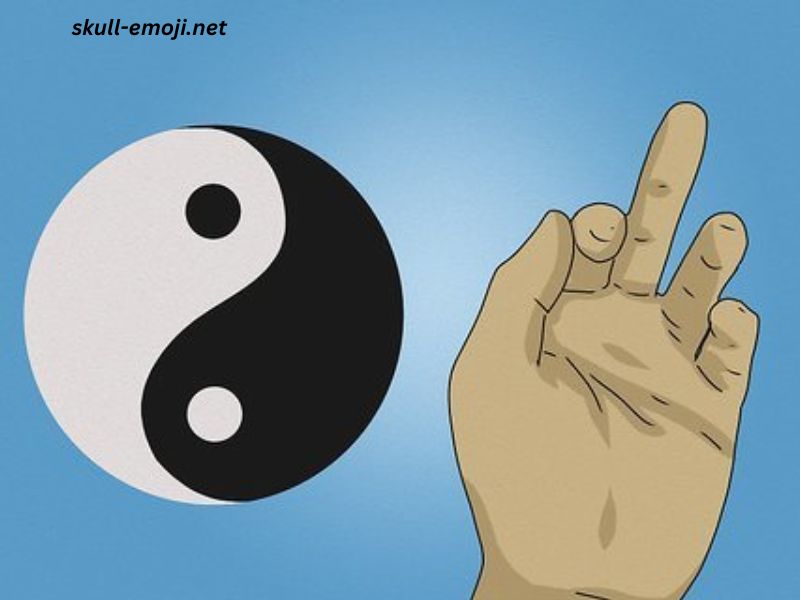In a world that is increasingly interconnected, it’s no surprise that cultural differences sometimes lead to confusion or misinterpretation of gestures, expressions, and even body language. One particular gesture that has sparked curiosity and debate in recent years is the use of the pinky finger in various contexts across the globe. Some claim that the pinky is the “Chinese middle finger,” a notion that has gained traction on social media platforms and within certain communities. But is this true? Is the pinky really the equivalent of the middle finger in Chinese culture, or is this just another case of misinformation?
In this article, we will dive deep into the origins of hand gestures, their meanings in different cultures, and whether the pinky finger holds the same connotation as the middle finger in China. By the end, you’ll have a clear understanding of this fascinating topic, along with some insight into global body language and cultural sensitivity.
What Are Hand Gestures?
Hand gestures are a universal part of human communication. They can convey emotions, directions, or even entire messages without the use of words. From waving hello to signaling a “thumbs-up,” hand gestures are often more powerful than speech itself. These non-verbal cues are learned early in life and are deeply embedded in cultural contexts. However, what may be considered a harmless or positive gesture in one country could have entirely different connotations in another.
In Western cultures, for example, the middle finger is widely recognized as a vulgar or offensive gesture. It’s used to express frustration, anger, or insult. However, in other parts of the world, gestures involving the fingers may have completely different meanings. The exploration of whether the pinky finger is considered a “Chinese middle finger” can provide valuable insights into these cross-cultural misunderstandings.
Understanding the “Chinese Middle Finger” Myth
The phrase “Chinese middle finger” or the claim that “the pinky is the Chinese middle finger” often arises in online discussions, memes, and some social media posts. This idea suggests that in China, raising the pinky finger is as rude and offensive as showing the middle finger is in the United States or other Western countries.
However, this claim is largely a myth. The pinky finger in Chinese culture does not traditionally carry the same offensive connotation as the middle finger. While the middle finger is universally recognized as an obscene gesture in many Western nations, the pinky finger holds different symbolic meanings depending on the context in which it is used.
The Pinky Finger in Chinese Culture
To understand the role of the pinky finger in Chinese culture, it’s important to consider the broader significance of hands and gestures in China. In Chinese culture, the pinky finger is typically not seen as an offensive gesture. Instead, the pinky finger is often associated with concepts like delicacy, elegance, and even loyalty in some cases. For example, the Chinese idiom “小指手指” (xiǎo zhǐ shǒu zhǐ), or “pinky finger,” can symbolize a small but important connection, often in the context of a promise or agreement, such as a “pinky swear.”
The idea that the pinky finger could be equated to the middle finger is a misconception, possibly stemming from a misunderstanding of various cultural symbols. In fact, in traditional Chinese culture, the middle finger does not hold the same kind of vulgar connotation it does in the West. Instead, Chinese hand gestures tend to focus more on the use of the hands for respectful actions, such as bowing or offering items with both hands.
The Middle Finger: A Universal Gesture?
The middle finger, often referred to as “flipping the bird,” is widely recognized as an obscene gesture in many countries. In the United States, Canada, the UK, and numerous other Western nations, extending the middle finger is an explicit sign of disrespect, anger, or defiance. However, its usage is far from universal.
Interestingly, the middle finger gesture is not as commonly used in countries like Japan, South Korea, or China. In these regions, other hand gestures take precedence when expressing dissatisfaction or insult. In Japan, for instance, a more subtle gesture, such as raising the index finger to emphasize a point, is used, while in Korea, the “peace sign” is often employed, albeit in a less overtly offensive manner.
In China, if someone were to extend their middle finger in a rude or insulting manner, it would likely be understood by younger generations who have been exposed to Western media, but it is not a native or traditional gesture in Chinese culture. Thus, the claim that the pinky finger serves as the “Chinese middle finger” is not based on any historical or cultural truth.
Cross-Cultural Misunderstandings of Hand Gestures
What might seem like an innocuous gesture to one culture can have vastly different meanings in another. The misinterpretation of the pinky finger as the “Chinese middle finger” may be a result of Western influences mixing with Chinese cultural practices, especially in the digital age. As the world becomes more globalized, many people have become familiar with Western gestures such as the middle finger, and these gestures are sometimes misapplied to different cultural contexts.
Exploring Other Cultures’ Hand Gestures
It is essential to consider how different cultures use hand gestures and how some gestures are universally recognized, while others vary widely. Here are some examples of how hand gestures are perceived around the world:
- Middle East and South Asia: In many Middle Eastern and South Asian cultures, the “thumbs up” gesture, which in Western contexts often indicates approval or positivity, can be interpreted as an insult.
- Italy: The “horns” gesture (index and pinky fingers extended, other fingers curled) is often used to ward off bad luck or to insult someone, depending on the context.
- Brazil: In Brazil, the “OK” hand gesture (thumb and index finger forming a circle) can be seen as highly offensive in certain regions, as it can symbolize a sexual insult.
- Greece: The “V” sign, with the palm facing inward, can be an offensive gesture similar to the middle finger in some parts of Greece, while in other regions it simply represents “peace” or “victory.”
Conclusion
To address the question posed in the article title—Is the pinky the Chinese middle finger?—the simple answer is no. The pinky finger in Chinese culture does not hold the same vulgar or offensive meaning as the middle finger does in Western cultures. The idea that the pinky is the “Chinese middle finger” is a myth, likely fueled by cultural misunderstandings and the global spread of Western gestures.
Instead, the pinky finger in China often carries connotations of delicacy, elegance, and even loyalty, particularly in the context of promises. Furthermore, hand gestures in Chinese culture are often used to convey respect, humility, and politeness, which contrasts sharply with the overtly defiant and insulting gesture of the middle finger.
It’s important to approach body language and hand gestures with sensitivity and awareness of cultural differences. As the world continues to become more interconnected, taking the time to understand the nuances of gestures in different cultures can help foster mutual respect and avoid unintentional misunderstandings.
So, the next time you see someone raise their pinky finger, rest assured that it is not a sign of insult in China. Instead, it is likely a gesture imbued with deeper cultural meaning—one that may differ significantly from what you might encounter in the West.



